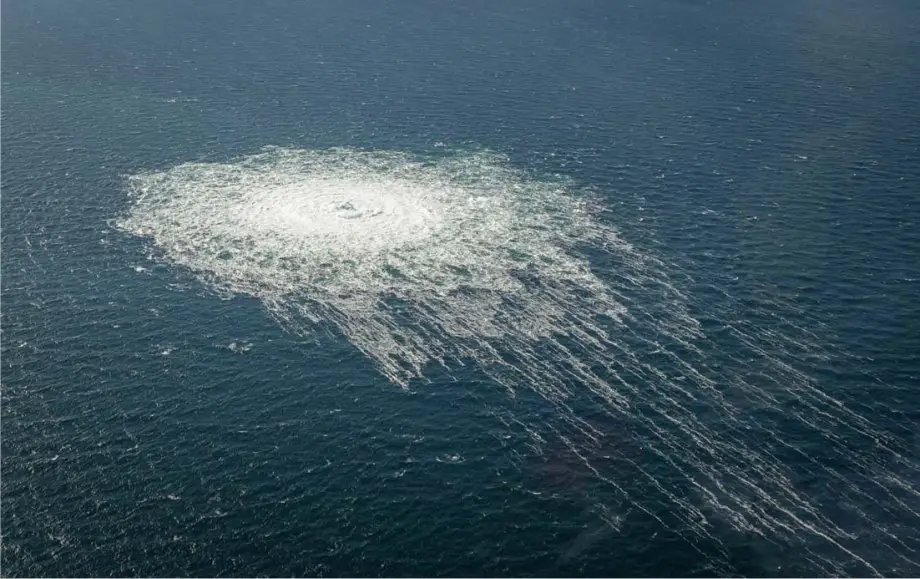The Norwegian military intelligence document highlights a significantly heightened threat environment for Norway. This was stated by the Head of the Norwegian Intelligence Service, Nils Andreas Stensønes, at a press conference.
Follow Navy Recognition on Google News at this link
 The gas emission from Nord Stream 2 observed by the Danish F-16 interceptor near Bornholm. (Picture source: Forsvaret)
The gas emission from Nord Stream 2 observed by the Danish F-16 interceptor near Bornholm. (Picture source: Forsvaret)
The Arctic emerges as a region of paramount importance for Russia, both for its natural resources and as a cornerstone of its nuclear deterrence strategy. Russia's ambitions to assert dominance in the Arctic are juxtaposed with its perception of vulnerability due to increased NATO activity and the strategic interests of other nations in the region.
In response to NATO's enlargement, which Russia views as a reduction of its strategic buffer in the Baltic Sea, the importance of naval power in Russia's military strategy has been accentuated.
The Northern and Baltic Fleets are crucial in showcasing Russia's military strength across the north, the Atlantic, and within the Baltic Sea region. This shift towards naval power projection is further underscored by the redeployment of land forces from the Kola Peninsula to the Ukrainian conflict, emphasizing the Northern Fleet's role in maintaining combat power near Norwegian borders and posing a significant threat to NATO's northern maritime flank.
The document also highlights the Russian underwater reconnaissance program's capabilities in mapping, reconnaissance, and potential sabotage activities against civilian communication cables and underwater installations. This presents a considerable threat to the critical underwater infrastructure and energy sectors of Western countries and Norway.
Moreover, the Russian naval exercise Ocean Shield, conducted in the Barents Sea, the North Sea, and the Baltic Sea, is indicative of Russia's strategic intent to demonstrate its forward-deployed capabilities, including submarines and surface vessels, in key strategic areas.
The exercise reaffirms Russia's view of the High North and the Baltic Sea as a continuous strategic area, emphasizing the importance of the Bear Gap in Russia's bastion defense strategy.



